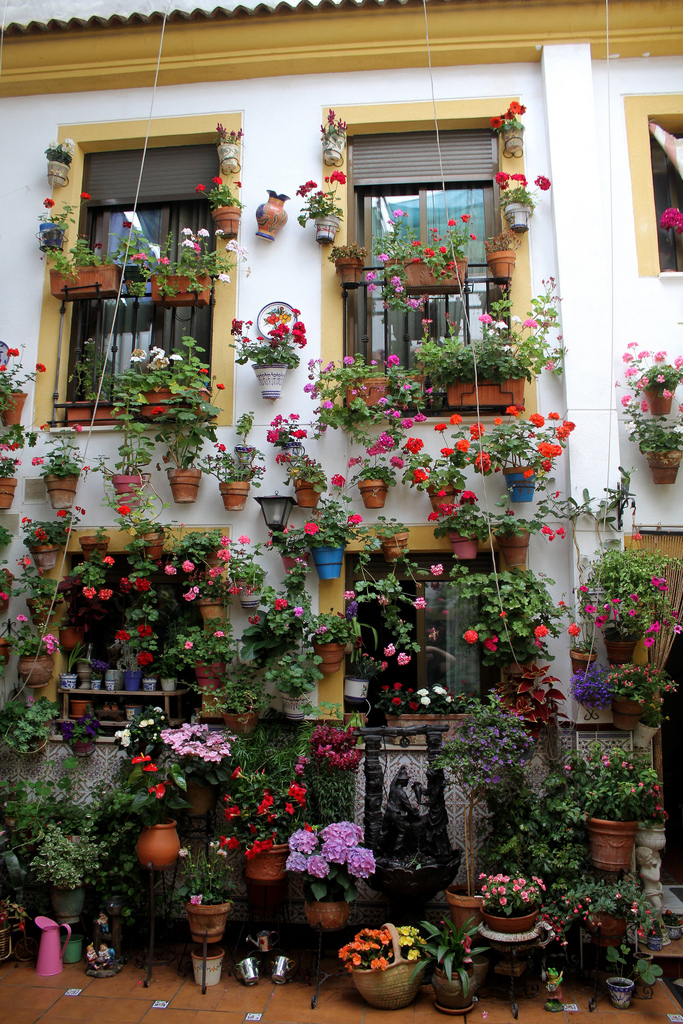Learn Spanish in Spain offers you the opportunity to discover a long list of different oral and intangible treasures available in the country. The Intangible Cultural Heritage is part of a UNESCO program which aims to ensure the best vision and awareness of it value. The program was established in 2008 with the UNESCO Convention.
Only a few days ago, The Patios de Córdoba Festival has received the statement of Unesco: The Intangible Cultural Heritage. It is a festival that is held every year in the month of May, where the most prominent ancient courtyards are open to the public to participate in a competition that began in 1921.
In Cordoba, the initial model of house was hispanic-romama. Later was arabic, this stage which gave his physiognomy. In the nineteenth century the houses became convert multi-family and started the tradition. This Christmas you can visit some courtyards, where location, details and schedules can be checked at this link: Patios de Córdoba.
The complete representative list of Intangible Cultural Heritage by Unesco in Spain is:
- El Misterio de Elche, 2008.
- La Patum de Berga, 2008.
- El Consejo de Hombres Buenos de la Huerta de Murcia, 2009.
- El Tribunal de las Aguas de la Huerta de Valencia, 2009.
- El Silbo gomero, lenguaje silbado de la isla de La Gomera (Islas Canarias) , 2009.
- La Cetrería, 2010.
- El Canto de la Sibila de Mallorca, 2010.
- El Flamenco, 2010.
- Los “castells” , 2010.
- La Dieta mediterránea, 2010.
- La Fiesta de «la Mare de Déu de la Salut» de Algemesí, 2011.
- La Fiesta de los Patios de Córdoba, 2012.
Cordoba, as a destination to learn Spanish in Spain, now adds an additional incentive to the city, already declarated World Heritage in the old town, with nice Jewish quarter and the Cathedral-Mezquita. Cordoba is a very attractive city to study Spanish.
Image: Patio cordobés, by Miguel Llamas http://goo.gl/HhV8s
Tags: Córdoba, Festival de los patios de Cordoba, Patrimonio de la Humanidad, Study Spanish in Cordoba, Unesco










